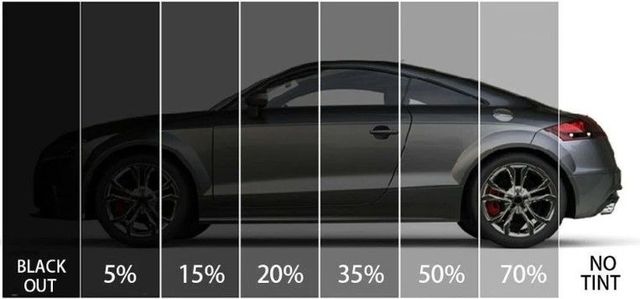Just How Vehicle Window Tinting Maintains Your Lorry Cool in Heat
Just How Vehicle Window Tinting Maintains Your Lorry Cool in Heat
Blog Article
Home Window Tinting Rules and Standards: What You Need to Know Before Tinting Your Vehicle
Prior to continuing with home window tinting for your automobile, it is important to familiarize yourself with the varied legislations and standards that govern this method throughout various states. These regulations dictate the allowable levels of tint darkness, usually measured by visible light transmission (VLT) portions, and include specific stipulations for front windshields focused on making sure road safety and security. Furthermore, certain territories might supply clinical exemptions for people with certifying problems. Comprehending these intricacies can conserve you from prospective legal ramifications, however what are the certain guidelines in your state?
Review of Window Tinting Rules
Home window tinting regulations are often based on variant across various territories, reflecting regional laws and safety and security factors to consider. These legislations dictate the permitted degrees of tint darkness and reflectiveness on automobile windows, making certain that chauffeurs preserve appropriate exposure while also protecting versus unsafe UV rays and warmth.
The majority of regulations classify window tinting based upon the Visible Light Transmission (VLT) portion, which suggests the amount of light that can pass through the home window. Usually, reduced VLT portions indicate darker colors. Legislations commonly set apart in between the front, side, and back windows, with more stringent constraints used to the front windscreen to enhance security for both the motorist and other roadway individuals.
In addition, some jurisdictions impose constraints on the reflectivity of the color, stopping excessive glare that can harm visibility. Exemptions to these laws may exist for people with specific medical conditions requiring extra sun protection. Conformity with home window tinting policies is vital, as violations can lead to fines, compulsory elimination of the tint, and prospective rises in insurance coverage premiums. It is essential for vehicle owners to familiarize themselves with regional legislations prior to proceeding with home window tinting installments.
State-by-State Tint Rules
Understanding the details home window tinting regulations in each state is vital for car proprietors looking for to adhere to the law. Each state in the united state has actually developed its own set of policies regulating window tinting, which can differ dramatically. These laws typically dictate the allowed levels of color darkness, the kinds of home windows that can be tinted, and any clinical exceptions that may apply.
For instance, states like The golden state have rigid constraints on tint darkness for front home windows, while others, such as New Mexico, might enable darker tints. Additionally, specific states mandate specific exposure percentages for various home windows, including the windscreen, front side windows, and back home windows. It is critical for automobile proprietors to familiarize themselves with their state's regulations to avoid potential fines or charges.
Furthermore, some states may call for a qualification sticker to be put on tinted home windows, suggesting conformity with state legislations. Failure to follow these laws not only takes the chance of legal repercussions however can additionally influence security and exposure while driving. Automobile proprietors need to carry out comprehensive research study or consult neighborhood authorities to make sure full understanding and compliance with state-by-state tint policies.
Allowed Color Types and levels
Several car owners might be amazed to discover that enabled tint degrees and types differ commonly throughout various states. Each state has established its very own guidelines regarding the acceptable darkness and reflectivity of window tint, often determined by Visible Light Transmission (VLT) percentages. VLT refers to the quantity of light that can pass via the colored home windows; thus, a lower percent shows a darker color.

In addition, the kinds of color materials permitted can vary, with some states restricting metal or mirror-like coatings. It is important for automobile proprietors to acquaint themselves with their state's specific regulations to guarantee compliance. Non-compliance can result in fines, required removal of the color, or various other lawful consequences, making it essential to comprehend these laws before waging setup.
Medical Exemptions for Tinting
While not all states give allocations for medical exemptions regarding home window tinting, those that do recognize the necessity for particular individuals to improve visibility and convenience because of clinical conditions. Various clinical problems, such as lupus, skin cancer, and certain eye conditions, can provide individuals specifically delicate to sunshine. Subsequently, these individuals may call for darker tints to shield themselves from hazardous UV rays and glare.

It is very important to keep in mind that also with a clinical exemption, there might still be limitations on the degree of color allowed. Conformity with state laws makes sure that people are both secured and within lawful limitations. Those taking into consideration medical exemptions should contact their regional Department of Electric motor Vehicles or comparable authority to recognize the procedures and needs required to get an exception effectively.
Fines for Non-Compliance
Falling short to abide click to investigate with window tinting legislations can result in considerable charges, which differ by state. Police are equipped to issue citations for cars that do not abide by the specified tinting laws. These charges normally include fines, which can vary from small amounts to a number of hundred bucks, relying on the intensity of the infraction and the state in inquiry.
In some territories, repeated offenses might lead to rising penalties or added penalties, such as obligatory court appearances. In addition, non-compliance might require the removal of unlawful tinting, frequently at the proprietor's expenditure. In extreme situations, habitual offenders might face suspension of their car enrollment until conformity is achieved.
Additionally, insurance coverage effects may arise from receiving numerous citations for window color violations. Insurers may view such violations as an indication of riskier actions, possibly leading to increased premiums or trouble in insurance coverage.
To prevent these fines, it is crucial for lorry proprietors to acquaint themselves with their regional home window tinting legislations and guarantee that their vehicle complies (Window Tinting). This aggressive technique not just stays clear of legal ramifications however also advertises roadway security
Verdict

A lot of policies classify home window tinting based on the Visible Light Transmission (VLT) percent, which indicates the amount of light that can pass via the window. Conformity with window tinting guidelines is crucial, as violations can result in penalties, necessary removal of the color, and possible increases in insurance policy costs.Recognizing the details home window tinting laws in each state is vital for automobile proprietors looking for to comply with the regulation. These regulations often determine the allowable levels of tint darkness, the types of home windows that can be tinted, and any medical exceptions that might use.
For circumstances, states like California have strict go to website restrictions on color darkness for front home windows, while others, such as New Mexico, might enable darker tints.
Report this page